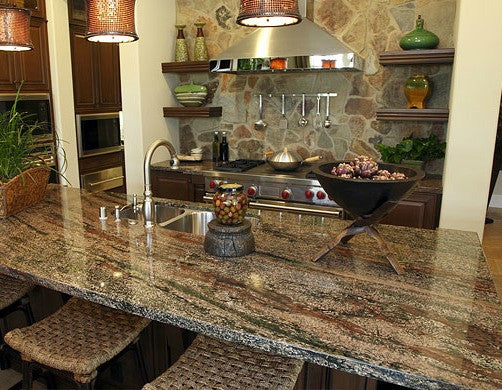When it comes to kitchen renovations, granite countertops are a popular choice due to their durability, aesthetic appeal, and value addition to the home. However, understanding the cost of granite countertops involves more than just looking at the price per square foot. This comprehensive guide will break down the various factors that influence the cost of granite countertops, helping you make an informed decision that aligns with your budget and design preferences.
Factors Influencing the Cost of Granite Countertops
1. Quality and Grade of Granite
Granite is available in different grades, typically categorized as low, mid, and high. The grade is determined by the stone’s appearance, thickness, and the presence of any imperfections. High-grade granite is usually more uniform in appearance, has fewer imperfections, and is thicker, which contributes to its higher cost. Conversely, low-grade granite may have more variations and be thinner, but it is more affordable.
2. Color and Pattern
The rarity and demand for specific granite colors and patterns significantly impact the cost. Common colors like black, white, and grey are usually more affordable, while unique colors like blue, green, or red can be more expensive due to their rarity. Additionally, the pattern of the granite, whether it is speckled, marbled, or solid, also affects the price. Intricate patterns or those that mimic natural scenes can command higher prices.
3. Size and Thickness
The size and thickness of the granite slab you choose will directly impact the overall cost. Standard thicknesses are 2 cm and 3 cm, with the latter being more expensive due to its added durability and luxurious appearance. Larger slabs or custom sizes will also increase the cost as they require more material and may involve more complex installation processes.
Breakdown of Costs
1. Material Costs
Material costs are the primary component of the total cost of granite countertops. This includes the price of the granite slab itself, which can range from $40 to $200 per square foot, depending on the quality, color, and pattern. It is crucial to choose a reliable supplier to ensure you get a high-quality product. For instance, Granite manufacturers in Rajasthan offer a wide range of premium granite slabs, ensuring you find the perfect match for your kitchen.
2. Fabrication and Edge Profiles
Fabrication involves cutting the granite slab to fit your kitchen dimensions and creating edge profiles. The complexity of the cuts and the type of edge profile you choose can significantly affect the cost. Standard edges like eased or bullnose are typically less expensive, while more intricate edges like ogee or waterfall can increase the cost due to the additional labor and skill required.
3. Installation Costs
Professional installation is essential for ensuring your granite countertops are securely and accurately placed. Installation costs can range from $20 to $50 per square foot, depending on the complexity of the job, the size of the countertops, and your geographical location. It is advisable to work with experienced Granite suppliers in Rajasthan to ensure a flawless installation process.
4. Additional Costs
There are several additional costs to consider when budgeting for granite countertops:
- Sealing: Granite countertops require periodic sealing to maintain their stain resistance. Initial sealing is often included in the installation cost, but resealing every 1-2 years is recommended, costing around $0.50 to $1.50 per square foot.
- Cutouts and Customization: Customizations such as sink cutouts, cooktop cutouts, and backsplashes can add to the overall cost. Each cutout typically costs between $100 and $200.
- Delivery Charges: Depending on the supplier and your location, delivery charges may apply. Ensure you inquire about these costs upfront to avoid any surprises.
Tips for Reducing Granite Countertop Costs
1. Choose Standard Colors and Patterns
Opting for more common colors and patterns can help reduce material costs. While unique and exotic granite slabs are beautiful, they come with a higher price tag. Standard options can still provide a stunning look without breaking the bank.
2. Select Standard Thickness
Choosing a standard 2 cm thickness instead of 3 cm can lower material costs. While thicker slabs are more durable, 2 cm granite is still robust and offers excellent performance.
3. Simplify Edge Profiles
Selecting simpler edge profiles can reduce fabrication costs. Standard edges like eased or bullnose are less labor-intensive and therefore less expensive.
4. Plan for Standard Slab Sizes
Minimizing customizations and using standard slab sizes can reduce waste and lower costs. Work with your installer to optimize the layout and reduce the need for additional cuts and customization.
Conclusion
Understanding the cost of granite countertops involves considering various factors, from the quality and color of the granite to installation and additional customization costs. By being aware of these elements and working with reputable manufacturers and suppliers, you can find the perfect granite countertop that fits both your aesthetic preferences and budget. Remember to factor in all associated costs, including sealing and maintenance, to ensure your countertops remain beautiful and functional for years to come. Investing in granite countertops is a decision that adds value, durability, and elegance to your kitchen, making it a worthwhile endeavor for any homeowner.

